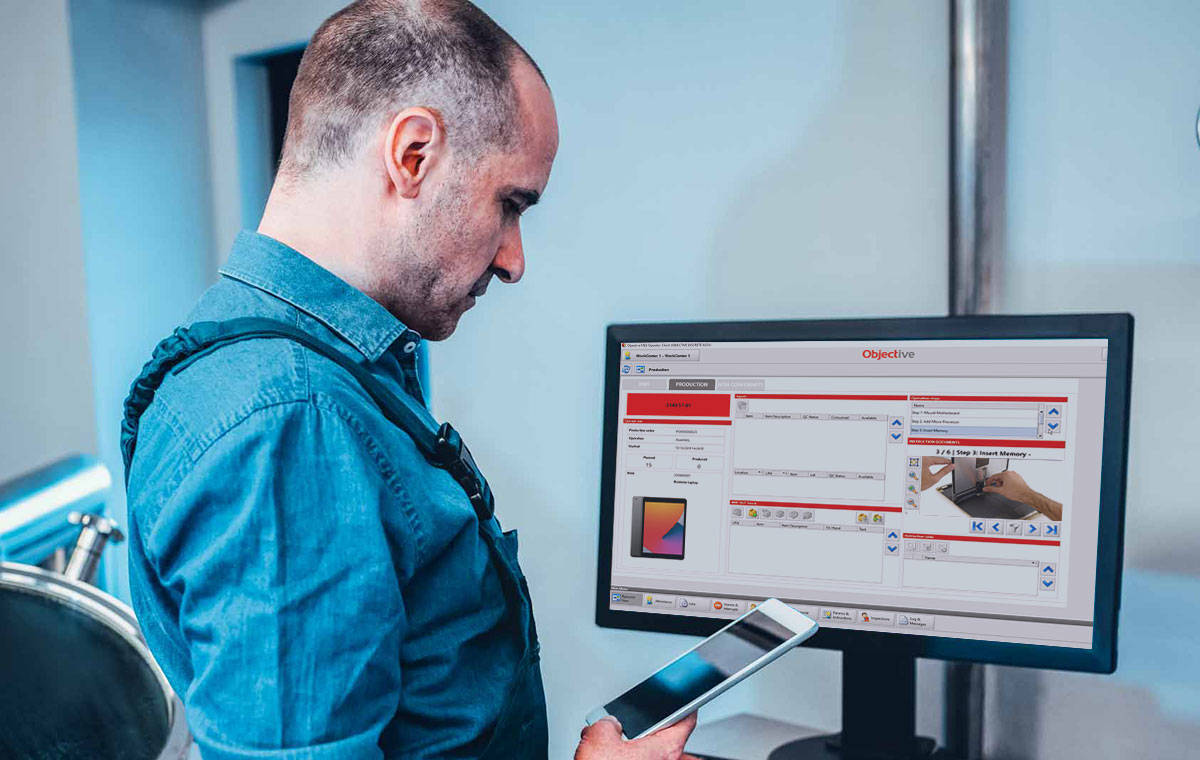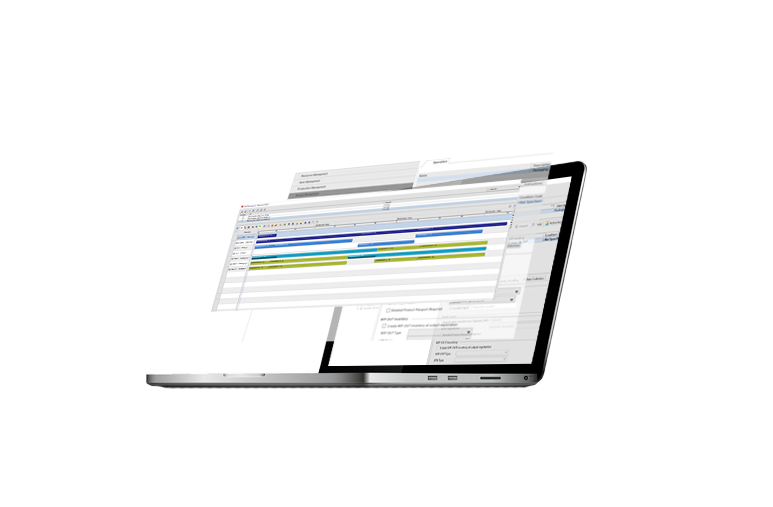Manufacturers have ever more stringent requirements when it comes to quality. The great pressure to be more efficient and to reduce costs is also a challenge. It is no different in the assembly industry. The assembly and fitting of certain components often takes up a lot of time, and some of these components can also cost a lot of money. If something goes wrong during the production process, it is advantageous to know about it immediately and be able to respond. This way, quality can be guaranteed and fewer components and time are lost.
With quality management as part of a Manufacturing Execution System (MES) and Warehouse Management System (WMS), production processes and stocks are continuously monitored, allowing potential problems to be identified quickly and thus avoiding or minimising delays and errors in production and logistics. Integrated quality management with MES and WMS software can provide companies with the tools to measure performance, improve the product experience for the customer, make compliance easier, and more.
SETTING QUALITY RULES VIA INSTRUCTIONS
A first step in ensuring the quality of the production process and end product is to establish instructions. Instructions can be used to determine how a specific process should proceed and what steps and actions are required. They guide the operators through the assembly procedure with information and tasks, displayed at the right time. These may consist of texts, photos, videos, questions, etc. that the operator is presented with. The clarity of such instructions minimises human error and improves compliance with quality standards.
Quality management can also identify events or results that trigger an Out Of Control Action Plan (OCAP). This plan helps employees when there is an escalation during a process or with an end product. In the MES and WMS system, companies can set up alerts and checkpoints in advance of such an out of control situation, further minimising the impact on quality.
Instructions can be set during the setup phase or during different parts of the production, defining and clarifying the initial rules.


MONITOR PRODUCTION WITH INSPECTIONS
The next step to ensure the quality of the production process and the final product is inspections. While instructions give guidance to the operator about the process, inspections allow the manufacturer to monitor the stock and ensure that the production quality norms are achieved. They can occur in the form of a measurement, question, task, etc. Inspections are an important part of quality control because a physical check is made to see if the set objectives are being achieved.
It goes without saying that quality is measured not only at the end, but also at the beginning and during production. With inspections set as part of the assembly process, in-line quality control is also possible.
Incoming goods can be checked immediately via the WMS software before they are taken to the warehouse. If there is something wrong with the delivered goods, they can be sent back to the supplier immediately and a new order can be placed. This saves a lot of time and unnecessary work.
Through the MES software, manufacturers get a real-time overview of all production stages where they can monitor everything. If problems are spotted at an early stage, defects can be rectified in time, which significantly reduces disturbances on the production line and costs.
OBJECTIVE MES & WMS
Objective helps you to monitor the quality of your end products. Not only do the SPC alarm and reporting functions allow you to better control your production process. You can also request quality data during production, follow specifications and display quality instructions to operators.

Our MES & WMS systems contain the quality tools that manufacturers need to achieve their production goals in the most efficient way possible, thus enabling them to position themselves strongly in the market. With Objective you can easily draw up quality instructions and it is possible to adjust them at any time. From the set-up phase to the presentation of documentation, such as operator instructions, standard procedures and checklists, Objective helps producers to create and communicate clear production and quality standards.
Want to know more about quality management in Objective? Check out the excerpt on instructions and inspections from our webinar “Managing production quality and efficiency“. If you have questions about how Objective can help your company optimize quality, you can always contact us without any obligation.

